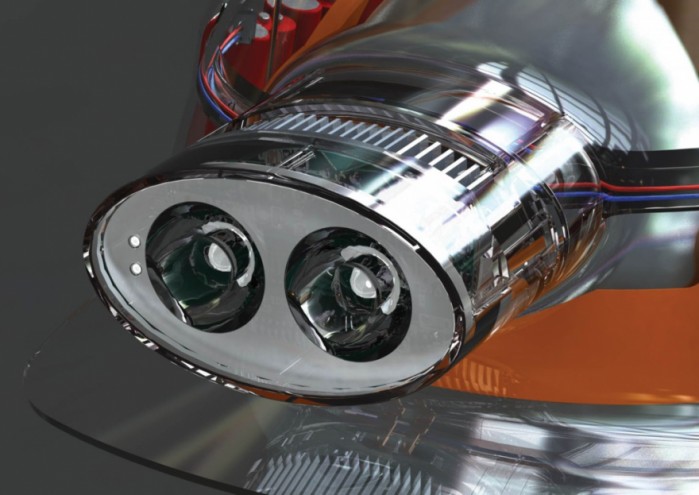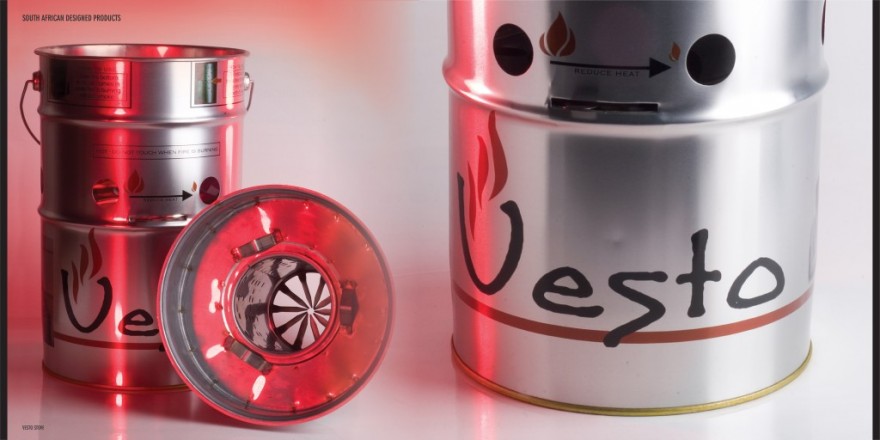First Published in
People in design will now tell you how passionate they are about empowering others, through local partnerships, to design a better, more ethical world - and a better, more competitive South Africa within that. But leaving aside the patronising overtones that accompany the idea of one group of people 'empowering' another, just what is the conception behind the design and creative industries that we are fighting for? What would represent genuine progress for a nation?
It is worth asking these naïve and simple questions. Especially when the willingness of the international design community to embrace motherhood and apple pie goes a lot further than its sense of discrimination in matters of international economic competitiveness. Everyone in design will wish South Africa well, congratulate it for its recent ascent in the world economy, and agree that design and innovation are the way forward. Yet, by comparison, a country like China offers 360 educational courses in industrial design, and has plans to develop cultural strategies for each and every one of its major conurbations. These alone show that motherhood and apple pie will not suffice for SA.
The fact is that global design gabfests, like the United Nations, are of one mind on what kind of design Africa should adopt. Everyone is agreed, and certainly there is very little dissent from the view, that local, ethnic cultures, crafts, aesthetics and intermediate technologies are the way forward for design and indeed for innovation, too.
Praise for partial solutions is what the architect and digital pseud Nicholas Negroponte, chairman and co-founder of MIT's Media Laboratory, has in mind with his plan for a $100 laptop to be distributed to children in the Third World - all as a means of bridging our old friend, the digital divide. Negroponte announced his new, non-profit association, One Laptop per Child (OLPC), at the World Economic Forum at Davos, Switzerland in January 2005 (see https://laptop.media.mit.edu/). Together with Kofi Annan of the UN, he unveiled a prototype in November 2005.
But as a celebration of the idea that something, anything, is better than nothing, this is one instance that reminds me of Marie Antoinette, and the famous remark that is still attributed to her: "Let them eat cake!" (By all accounts, it was actually Jean-Jacques Rousseau who invented this phrase of "a great princess" in 1766, at which time the still-to-be-infamous Marie-Antoinette was only 10.)
Today's starving masses, it appears, can and should be placated with some sweet, shiny, ethically correct, all-organic-ingredients, Fair Trade piece of electronic brioche. We find a similar but even more distasteful idea with the economist Jeffrey Sachs, and his 2005 report to Annan, Investing in development: a practical plan to achieve the Millennium Development Goals (see www.unmilleniumproject.org).
Sachs rightly observes that poor village-to-market transport services plague rural Africa. He rightly notes that 'major investments are needed', but believes these should be made on building and strengthening institutions charged with the design, operation and maintenance of transport infrastructure. The investments are not needed on new roads and railways, so much as on 'the supply of low-cost vehicles, bicycles and other means of transport'.
So Africa should cycle, and no doubt recycle, its way to competitive advantage. Design is for policies, strategies, landfills, and, says Sachs, for 'community toilet blocks where there is not enough room or funding for household provision'.
In this schema, design has the task of providing lots of labour-intensive jobs to the poor, as well as lots of second-rate products. Those products must be shared; there will be few that one could call one's own. Each home cannot expect, and should not expect, its own loo!
There is little place here for world-beating innovations, or for substantial but effective research and development programmes. There is a pervasive, condescending attitude that the natives will just have to make do.
Condescension rules
That attitude is everywhere. Take an important recent conference on design commissioned by the International Council of Graphic Design Associations, the International Council of Societies of Industrial Designers, and the International Federation of Interior Architects/Designers. In September 2005, more than 1400 delegates attended Era 05: World Design Congress 2005, an event organised by 16 design-related organisations in Scandinavia. Many attended a daylong session in Oslo; and there, according to the report of Kristina Goodridrich, executive director of the Industrial Designers Society of America, the message was clear.
One Norwegian announced the discovery that tradition and culture play an important role in the substance of design. Another revealed that souvenirs were no way to get ahead on world markets, but that obeying EU standards on product labelling was. However, it was left to Robert Aley, of the Intermediate Technology Development Group in the UK, and Dr Suki Mwendwa, head of the department of design at the University of Nairobi, Kenya, to justify the design of the three legs of a new wood-burning stove for Kenyan villagers.
The stove is not fixed to the legs, but balances upon them. Not too precariously, one hopes - for the legs are, like those of the older model before it, stones. These stones represent birth, life and death, or ancestry. As Aley summed it up, appropriate technology builds on the knowledge, skills and norms of local people. It seeks to sustain the local environment and is not just a replacement of human labour.
God forbid that we should automate anything! God forbid that Kenya, or indeed South Africa, could seriously aspire to meet the productivity levels, the domestic appliances or the level of income enjoyed by the US! Instead, the savages must be given souvenirs of themselves. And Dr Mwendwa is on hand to explain that in African culture, it is hearing that dominates the senses, rather than sight - that in a Kenyan village, an image has no meaning without rhythm.
Ah, so Africans "got rhythm" - how quaint! For this reason, we are told, the mass-produced poster, complete with graphic design, will not convince those Kenyans of the merits of their new wood-burning stove.
No, the "true" communication of the idea is properly accomplished through… dance and song.
Limited goals, and anything goes
To many, the purpose of design in the Third World is not that countries there should compete on the world market with well-designed, innovatory goods and services up the level of the iPod. Rather, the purpose of design is to contribute to the alleviation of poverty; to development, but only if the West deems that development sustainable; and, to good governance, in which the systems and policies are, again, designed by the West for the Third World.
Take a look at what the influential British thinktank Demos has in mind for research and development in China and India. It asks:
"'What role can the UK play in catalysing science-based partnerships to tackle poverty, climate change and other social and environmental problems? What alternative energy and environmental technologies are being developed? Will these enable China and India to 'leapfrog' straight to a cleaner, more sustainable model of economic development?"
In the classic style of Empire, London wants to determine the speed, pattern and direction of advance in the Third World. Or, rather, to hold that advance back. The London architect Richard Rogers laments the fact that Shanghai wants to move from pedal power to the petrol-driven engine. Everyone loves how South Africa has 'leapfrogged' from fixed-line telephony to the mobile phone. Yet nobody will publicly admit that the Computer Aided Design of cities, dams and power stations cannot be performed by mobile phone, but requires land lines and big computers.
What we find, as it turns out, is that low-cost, low-tech IT - ranging from $100 laptops to clockwork radios - is the one real concession Westerners will make to modernity in the Third World. Thus a country like South Africa can, it is said, profit from the fact that:
- There is no one best way of being a knowledge economy;
- The Thomas Edison way of doing innovation, with proper, well-equipped laboratories, is not necessarily the way to go;
- It is no longer vital, in a globalised world, to develop a national capacity for innovation, with ‘pipelines’ for products under development.
Rather, all that is required is for emerging economies to dip into global flows of clever ideas and clever people.
Western policy on design and innovation, in short, veers between encouraging local raffia work, and believing that innovation merely means surfing a global IT landscape of abundant knowledge.
It is all guff. But to question any of such guff is it to run the risk of being named an agent of McDonald’s, Haliburton, the pharmaceutical companies, big oil, and all that is evil in the world.
The times today demand that anyone who cavils at ‘small and cultural are beautiful’ mantras about design and economic development must be subjected to the flamethrower word ‘sustainable’.
Hell awaits those who persist in the deadly sin of world-changing ambition, whether they are firms, governments, or designers. But myself, I am not afraid of Hell, and am certain that many South Africans are not afraid, either. The time will come when South Africa will, through design but also through advanced technology, establish real sources of competitive advantage in international trade.
About the author
James Woudhuysen likes to think about the future. He is Professor of Forecasting and Innovation at De Montfort University, Leicester, in the UK. He helped install Britain’s first computer-controlled car park in 1968, before graduating in physics. He was editor of Design magazine, 1979-82, and a co-founder of Blueprint. Along the way, he’s also been head of worldwide market intelligence at Philips consumer electronics, as well as a director at Fitch, and at Seymour Powell. His attack on outdated techniques in homes and offices, titled Why is construction so backward?, was published by Wiley in 2004. Think about www.woudhuysen.com.












